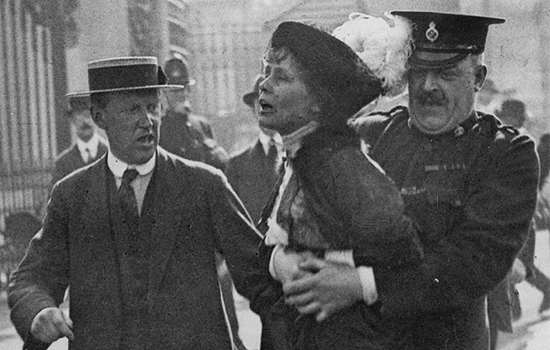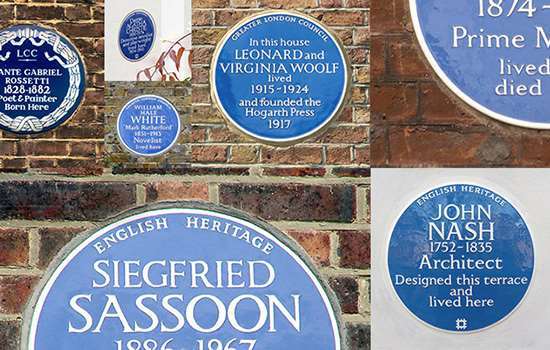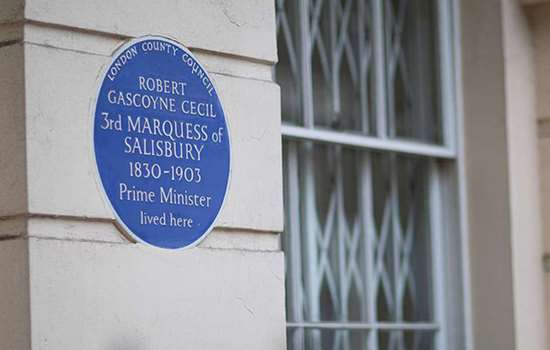BERLIN, Sir Isaiah (1909–1997)
Plaque erected in 2022 by English Heritage at 33 Upper Addison Gardens, Holland Park, London, W14 8 AJ, Royal Borough of Kensington and Chelsea
All images © English Heritage
Profession
Philosopher and historian of ideas
Category
History and Biography, Philosophy
Inscription
Sir ISAIAH BERLIN 1909–1997 Philosopher and historian of ideas lived here 1922–1928
Material
Ceramic
Isaiah Berlin was a philosopher, political theorist and historian of ideas. His essay ‘Two Concepts of Liberty’ remains one of the most influential and widely discussed texts in politics. Berlin is commemorated with a blue plaque at his childhood home, 33 Upper Addison Gardens in Holland Park.
EARLY LIFE
Isaiah Berlin was born on 6 June 1909 in Riga, Latvia, to Russian Jewish parents. The family lived in Russia for five years from 1915 until 1920 and returned briefly to Latvia before the anti-Semitism they encountered there forced them to make a new home in London in February 1921.
Berlin’s father, a wealthy timber merchant, was an Anglophile who had always wanted to educate his only child in an English public school. And so, after arriving in this country knowing only a few words of English, Berlin started at Arundel House School in Surbiton, and then became a pupil at St Paul’s School in 1922. It was while attending St Paul’s that Berlin lived at 33 Upper Addison Gardens – a period he later referred to as ‘my golden childhood’. The family lived there from January 1922 until May 1928. Berlin left for university later in 1928 having won a scholarship to Corpus Christi College, Oxford, and went on to graduate with Firsts in Greats (Classical Literature) and Philosophy, Politics and Economics in 1931 and 1932.
ACADEMIC CAREER
Berlin spent the whole of his subsequent professional life as an Oxford academic. He held a lectureship in Philosophy at New College 1932–8, was a Fellow of that college 1938–50, and Fellow, All Souls College, Oxford, 1932–8, 1950–66 and 1975–97.
He first made his mark with a ground-breaking biographical study, Karl Marx: His Life and Environment (1939), but he was primarily a public intellectual who preferred verbal communication. He was legendary as a captivating conversationalist and spellbinding lecturer, and was much in demand as a broadcaster and lecturer.
In the 1940s his meetings in the Soviet Union with surviving but persecuted members of the Russian intelligentsia – particularly the poets Anna Akhmatova and Boris Pasternak – reinforced his staunch opposition to Communism, and formed his future intellectual agenda. He then returned to All Souls, where his primary focus changed from philosophy to the history of ideas. His work during this time includes the influential The Hedgehog and the Fox: An Essay on Tolstoy’s View of History (1953), which distinguished between thinkers who are devoted to single, over-arching theories, and those who draw on multiple viewpoints and experiences.
‘TWO CONCEPTS OF LIBERTY’
Berlin was knighted in 1957, and in the same year was made Chichele Professor of Social and Political Theory, Oxford University, a position he held until 1967. His inaugural lecture spawned the key essay ‘Two Concepts of Liberty’ (published 1958), his best-known and most influential work. In it, he differentiated between negative liberty (the absence of restraint) and positive liberty (the means to act) – a distinction which to this day remains a basic starting-point for theoretical discussions on the meaning and value of political freedom.
His other books included Vico and Herder (1976), four volumes of collected essays (1978–80) and The Proper Study of Mankind (1997), an anthology of his best work. Intellectually active until the end of his life, he died in an Oxford nursing home on 5 November 1997 at the age of 88, and was buried in Wolvercote Cemetery, Oxford.
Nearby Blue Plaques
More About Blue Plaques



